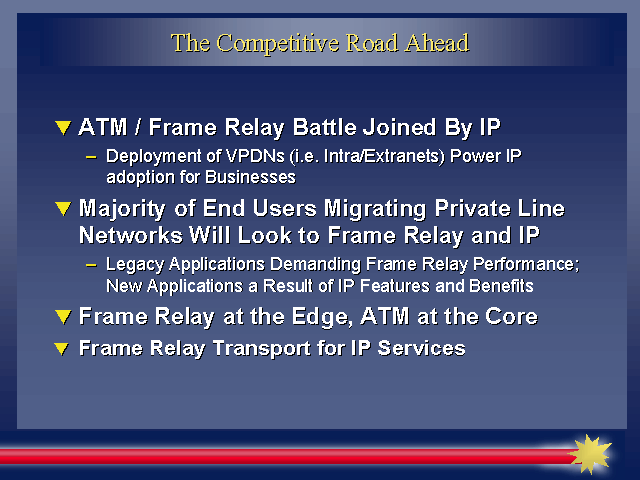Slide 20 of 25
Notes:
Slide 6. The Competitive Road Ahead
The future of Frame Relay has traditionally been tied to the notion that the success of ATM will render the technology obsolete. In addition, a new networking solution, IP, has burst its way into the networking consciousness.
Although both of these technologies will impact the current state of frame relay, neither will render frame relay “obsolete”. Frame relay’s entrenchment and efficient workhorse delivery have resulted in increasing demand for capabilities such as frame relay-to-ATM interworking. ATM continues to advance on today’s network core with its scalability and efficiencies, while frame relay continues to excel as the primary customer interface. The two will have many more opportunities for coexistence rather than competition.
IP-based applications look to deliver increased intelligence to users networks as compared to frame relay. This will move the price/performance proposition from network logical connections (frame relay and layer 2) to the price/performance of the network’s applications (i.e. directories, security, etc.). This eventual shift in user buying criteria focuses decisions on a services applications (i.e. that of VPDNs) versus the transport. However, even when this occurs, frame relay may be positioned as a more efficient core backbone transport for the consolidation of IP-based applications and services – similar to ATM’s role as the core backbone for some frame relay services.

